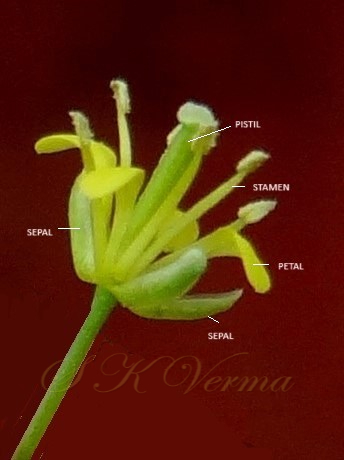SISYMBRIUM
Sisymbrium
L., Sp. Pl. 657. 1753; Gen. Pl. ed. 5: 296. 1754; Hook. f. & Ander, in Hook. f. Fl. Brit. Ind. 1: 147. 1875; Schulz in Engler, Pflanzenr. 86 (IV. 105): 46. 1924; Schulz in Engl. & Prantl, Pflanzenfam. ed. 2, 17 b: 590. 1936; Collett, Fl. Siml. ed. 2: 33.1921 (Reprint 1980); Fl. China @ eFloras.org 8: 177; Fl. Pak. @ eFloras.org p. 248.
Annual, biennial or perennial herbs, usually subglabrous or sparsely hairy with simple hairs. Stems erect, prostrate or decumbent, often branched distally. Leaves mostly lyrate-pinnatipartite, lower petiolate, rosulate or not; upper sessile to subsessile, similar to basal. Racemes many flowered, elongated in fruit. Flowers small or medium sized, mostly yellow; pedicels often spreading and +/- thickened, sometimes as wide as fruits. Sepals 4, erect, not or slightly saccate at base of lateral sepals. Petals nearly twice as long as sepals, oblong- obovate, spathulate or suborbicular, narrowed into a claw. Stamens 6, tetradynamous; filaments dilated or not at base; anthers oblong, obtuse or subobtuse. Lateral nectar glands annular, quadrate or hexangular; middle glands joining the laterals, often torose (with swellings or knobs) or short stalk-like. Ovary linear-cylindrical, sessile, usually many ovuled; style short, thickened with depressed; +/- 2-lobed, capitate stigma. Siliquae linear-sub cylindrical, erect to spreading, often elongated, bilocular, dehiscent; valves +/- convex and three-veined, usually glabrous, smooth or torulose, septum hyaline; seeds 1-seriate, usually many, oblong or ellipsoid, brown.
48 species
Sysmbrium irio
Sysmbrium irio
Linn., Sp. Pl. 659. 1753; Hook. f. & Ander, in Hook. f. Fl. Brit. Ind. 1: 150. 1875; Schulz in Engl. and Prantl, Pflanzenfam. ed. 2,17 b: 597. 1936; Fl. China @ eFloras.org 8: 178; Fl. North Amer. @ eFloras.org 7: 770; Dhaliwal & Sharma, Fl. Kullu Dist. 141. 1999; Jafri in Nasir and Ali, Fl. W. Pak. 55: 248. 1973; Kaur & Sharma, Fl. Sirmaur. 145. 2004.
Annual herbs, up to 70 cm tall. Stems erect, branched, sparsely pubescent. Basal leaves not rosulate; petiole 1-4.5(-11) cm, channelled; blade oblanceolate or oblong in outline, runcinate - pinnatisect, 3-12 cm x 1-6 cm, up to 32 cm x 7.5 cm; lateral lobes 2-6 (2-6-jugate) on each side of midvein, smaller than terminal, oblong or lanceolate, entire, dentate or lobed. Uppermost cauline leaves smaller than basal, entire or 1-4- lobed. Inflorescence corymbose raceme (siliquae reaching beyond the flowering buds), elongating in fruiting up to 58 cm. Fruiting pedicels divaricate or ascending, slender, narrower than fruits, 5-12(-20) mm, hairy. Sepals 4, oblong, erect, 2-2.5 mm x 1-1.5 mm, hairy or not. Petals 4, yellow, oblong-oblanceolate, 2.5-4 mm x 1-1.5 mm, claw nearly equal to sepals. Stamens 6, tetradynamous; filaments ca. 2.75 mm long of larger stamens, ca. 1.75 mm long of shorter stamens; anthers oblong, ca. 0.5 mm long. Nectaries 4, one each at base of lateral and median pair of stamens. Ovary bilocular, with 40-90 ovules per ovary. Siliquae narrowly linear, slender, terete, 2.5-5 cm x 0.9-1.1 mm, straight or slightly curved inwards, younger ones overtopping flowers; valves submembranous, convex, glabrous, slightly torulose, with three veins with distinct midvein; style inconspicuous, thickened ca. 0.2-0.5 mm long; stigma 2-lobed; septum membranous; seeds 20-40 in each loculus. Seeds oblong, 0.8-1 mm x ca. 0.5 mm, yellowish brown.
Common Names: London Rocket; Khubkalan, Asalio Khubkhala (Hindi)
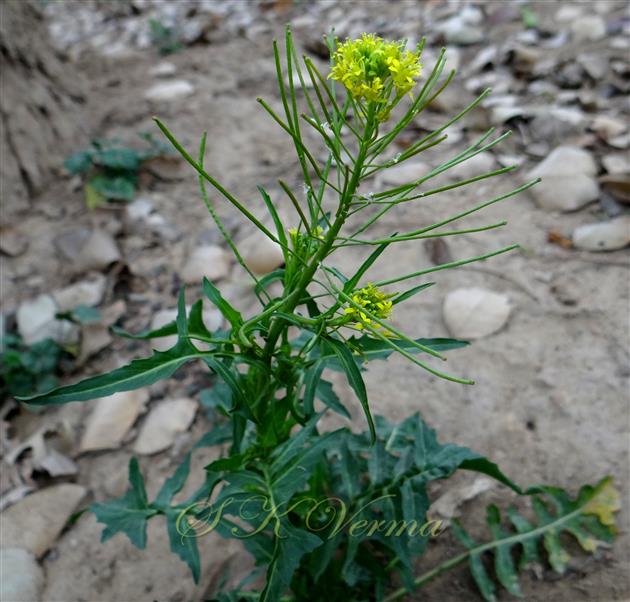
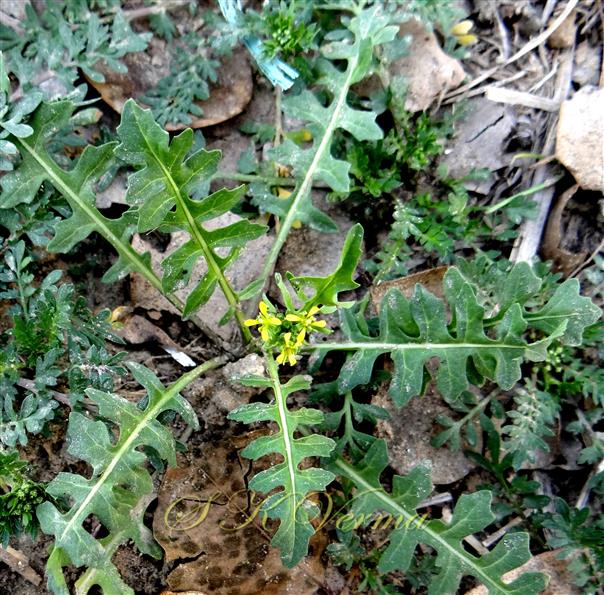
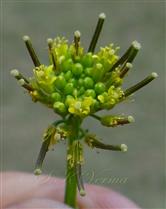
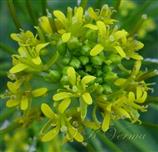
-DSC02598.jpg)

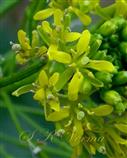
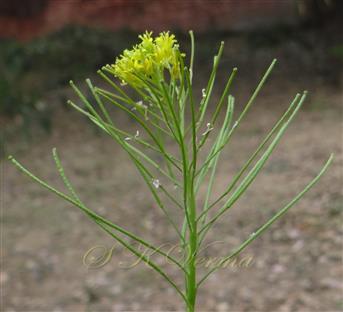
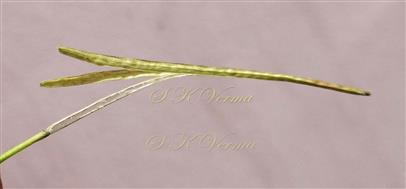





-DSC02598.jpg)
